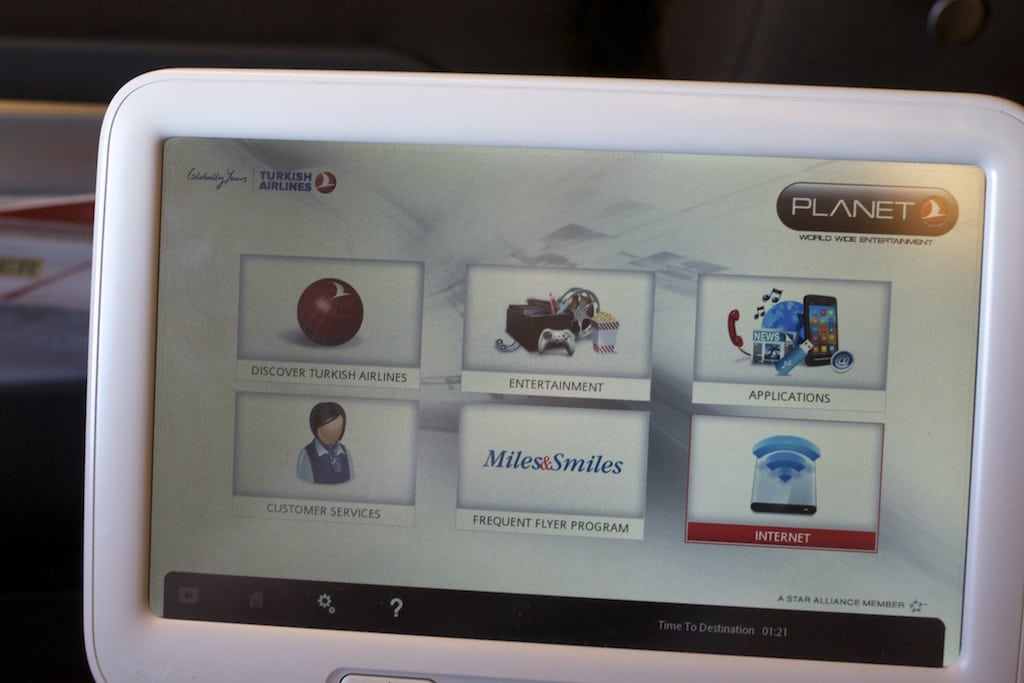Skift Take
Lots more flights now have Wi-Fi and seat-back entertainment, and marketers naturally want access to this captive audience. But how do you do it without angering guests (many of whom pay these services)? It's a tricky balancing act.
This week we’re thinking about in-flight Wi-Fi.
Once considered a novelty to many fliers, the amenity has increasingly become a necessity for travelers looking to stay productive and connected on the road. But given the growing availability and popularity of in-flight Wi-Fi, it’s also attracting significant attention from marketers, who are looking to reach this captive audience with shopping promotions and advertising. How should airlines and the marketers trying to reach Wi-Fi users balance between maximizing profit and potentially annoying customers?
In-Flight Wi-Fi Drives New Marketing Opportunities for Airlines
More readily available in-flight Wi-Fi has generally been good news for travelers hoping to stay connected en route. But one side-effect of its ubiquity is a growing embrace of the channel by airlines using it push in-flight advertising and shopping promotions. Think of it like the digital successor to the once-popular SkyMall catalogs. Fliers are a captive audience looking to pass the time, and they increasingly fill that time by shopping in online stores. However, striking the right balance between boosting profits and irritating passengers can be tricky. Read more
New Research Highlights Habits of Asia Pacific Travelers
Notwithstanding China’s recent economic woes, the Asia Pacific region increasingly drives much of the growth in new global travel spending. Many predict the region will account for more than half of all worldwide travel spending in next few decades. A new global travel study out this week offers insights into some of the habits of this burgeoning traveler group. Among the range of findings in the global study, which included more than 5,000 travelers and hoteliers in the Asia-Pacific region, are the importance of factors like shopping amenities when choosing destinations, and the importance of loyalty programs in hotel choices. Read more [link opens PDF]
Choice Hotels Mulls Move Into Vacation Rentals Market
There’s already been plenty written about the potential threat accommodations-sharing platforms, including Airbnb and HomeAway, represent to the hospitality business. However, as the vacation rental and apartment-sharing market continues to heat up, one side effect may be that more traditional travel businesses get more involved in offering such properties to customers. That’s exactly what Choice Hotels International CEO Steve Joyce hinted in comments last week at the Americas Lodging Investment Summit, suggesting the brand would soon be launching a platform to let customers book third-party vacation rentals. Read more
Expedia Integrates Apple’s 3D Touch to Simplify Mobile Purchases
One of the more interesting features Apple launched with its iOS 9 mobile operating system was a feature called 3D Touch, a gesture allowing users to not only tap on their screens but to push down more forcefully to enable hidden features and menus. One travel brand that recently integrated the feature is Expedia, which is now using 3D Touch in its mobile app to help simplify mobile purchases. Though the improvement may seem like a small change, as more travelers book their purchases using mobile devices, making sure the process is quick and simple will be paramount. Read more
Helping Luxury Hotels Crack TripAdvisor’s Coveted “Top 10” List
Winning the TripAdvisor review game can be a tricky proposition for hotels. Make the list of the top 10 properties in a given destination, and bookings and site traffic are destined to rise. But along the way hoteliers must navigate the tricky waters of getting guests to leave good reviews. This has been a particular challenge for luxury hotels, which covet the top-tier rankings, but struggle to balance between asking for feedback and doing so in a tasteful, non-annoying way. Read more
Using Mobile Actions to Improve the Travel Experience
By now, virtually every travel marketer would agree that having a basic mobile strategy for their business is important. But beyond the fundamental “blocking and tackling,” many are still missing opportunities to use mobile in ways that fundamentally improve the travel experience for customers. As it turns out the thousands of tiny mobile data points users share every day, around activity like location and what’s in our calendar apps, can be the key to unlocking much bigger insights for travel brands. Read more
The Daily Newsletter
Our daily coverage of the global travel industry. Written by editors and analysts from across Skift’s brands.
Have a confidential tip for Skift? Get in touch
Photo credit: More airlines are using in-flight Wi-Fi to market to fliers. How do they strike the right balance between maximizing profit and annoying guests? Jun Seita / Flickr
